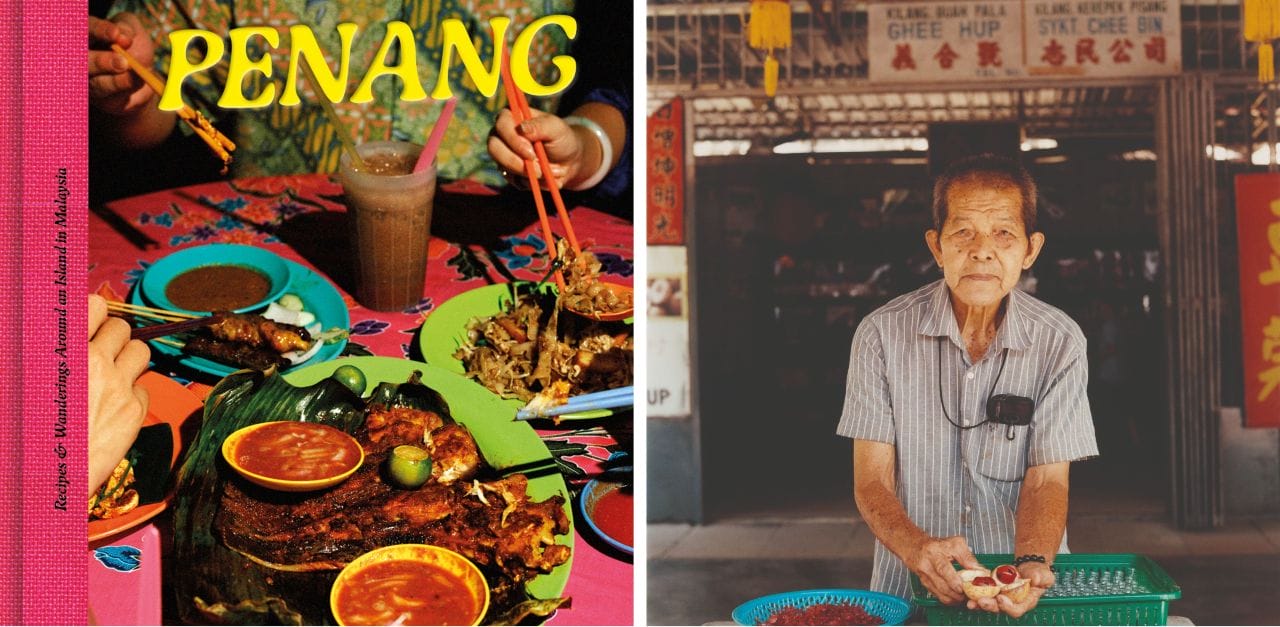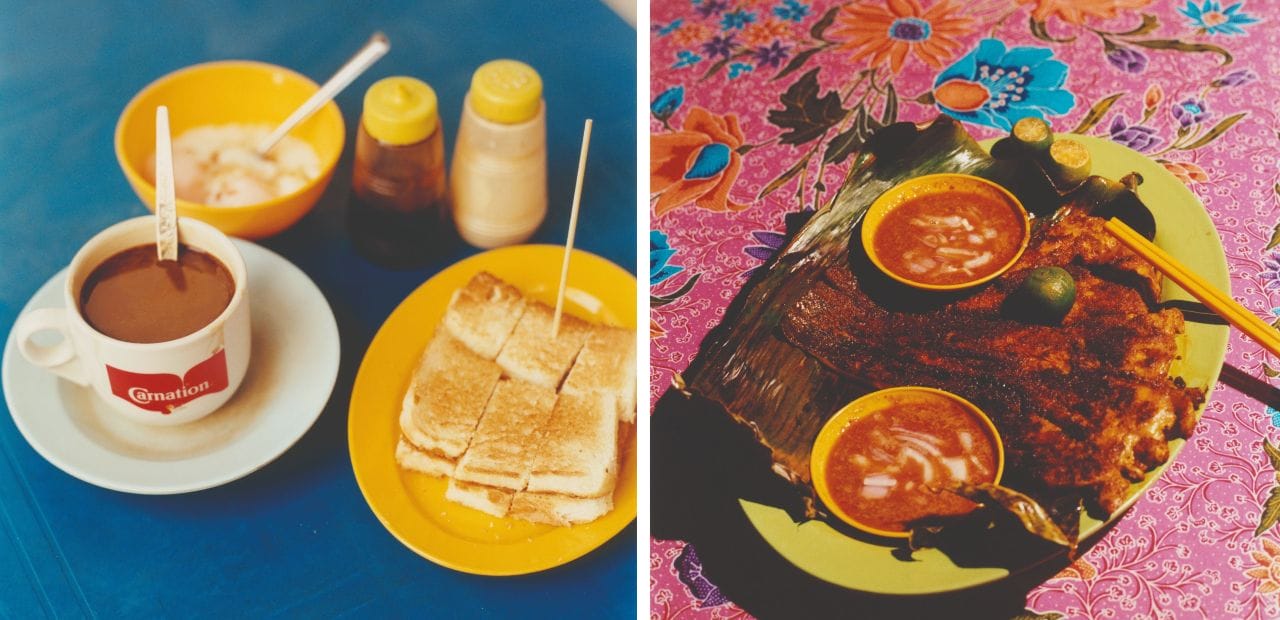Penangites are fiercely proud people, especially of their rich culinary heritage served in countless spots throughout the island that range from cheap hawker eats to Michelin-starred fine dining establishments. As a born and bred Penangite, internationally acclaimed author Tash Aw sums up my feelings for my home state by writing, “For its inhabitants, it sometimes seems that Penang is more important than Malaysia. For the outsider, this feels both wonderful and unsettling. Why does everything feel so familiar but so different?”

Aw’s apt words are part of just one of the essays that are love letters to the northern state in the newly published 192-page hardcover book, Penang: Recipes & Wanderings Around an Island in Malaysia (€49). It is the second volume after the first on Liguria in the new series Recipes & Wanderings by Belmond, the luxury hospitality brand that operates high-end hotels and trains such as the Eastern and Oriental Express, and Apartamento, the independent magazine known for its focus on interior design and lifestyle.
 Settle in comfortably into your armchair, crack open the tome’s spine, and be transported to the enchanting island with an introduction and recipes by André Chiang (pictured above), chef extraordinaire and culinary director of the Eastern & Oriental Express. If you’re wondering what a Taiwanese chef knows about Penang, Chiang said, “Penang’s culinary practices and traditions have significantly influenced my cooking. Growing up in a multicultural environment, I’ve had the privilege of experiencing cuisines from across the globe,” Chiang writes. “Penang’s food culture, however, holds a special place in my heart. Its rich history, cultural depth, authenticity, and vibrant community blend seamlessly together, shaping my culinary identity both directly and indirectly. Whenever I cook, I find myself naturally incorporating unique flavour combinations that feel balanced and harmonious, an effect I attribute to the influence of Penang.”
Settle in comfortably into your armchair, crack open the tome’s spine, and be transported to the enchanting island with an introduction and recipes by André Chiang (pictured above), chef extraordinaire and culinary director of the Eastern & Oriental Express. If you’re wondering what a Taiwanese chef knows about Penang, Chiang said, “Penang’s culinary practices and traditions have significantly influenced my cooking. Growing up in a multicultural environment, I’ve had the privilege of experiencing cuisines from across the globe,” Chiang writes. “Penang’s food culture, however, holds a special place in my heart. Its rich history, cultural depth, authenticity, and vibrant community blend seamlessly together, shaping my culinary identity both directly and indirectly. Whenever I cook, I find myself naturally incorporating unique flavour combinations that feel balanced and harmonious, an effect I attribute to the influence of Penang.”
There are a total of 23 recipes in the book, including those by Malcolm Lee, chef-owner of the world’s first Michelin-starred Peranakan establishment, Candlenut, and Abby Lee, one of London’s hottest chefs who founded modern Malaysian restaurant Mambow. Whether you’re a home cook or not, this might inspire you to pick up a spatula to make Nasi Lemak à la française, a simple Iced Nutmeg Drink, or even a plate of Penang Char Koay Teow. The recipe for the latter is accurately accompanied by the description, “This dish is not only fired up in the wok, it is also fired up in conversation; locals passionately debate each other about where to get the best wok hei-fired (breath of the wok) Char Koay Teow on the island. I personally have strong opinions on where to go and where not to go for the rice noodles.”

As Chiang explains, Penang’s culinary landscape is renowned for its vibrant fusion of Chinese, Malay, Indian, and Peranakan influences. Known as a street food paradise, the island offers iconic dishes such as Penang Laksa and Hokkien Mee, each showcasing bold, complex flavours that balance sweet, sour, salty, and spicy notes. Fresh, local ingredients such as tamarind, belacan, and seafood are central to its cuisine. The city’s UNESCO heritage status has played a key role in preserving traditional cooking methods, ensuring that its food remains authentic.
 Malaysian writer, poet, and academic Dr. Anna Sulan Masing, as well as food and table stylist and cook Kirthanaa Naidu, also penned their thoughts in essays that truly capture the beauty of Penang in ways I’ve never thought of. The book also made me discover fascinating facts—such as how Penang became a centre for nutmeg production in the 19th century. These are all accompanied by nostalgic and vibrant images by Luo Yang (pictured above), a Chinese photographer who Ai Weiwei dubbed as one of the “rising stars of Chinese photography” and who has been listed as one of BBC’s 100 Women. In one captivating shot, she captures mace, the dried external fibrous covering of a nutmeg, drying in a basket in the shadows to create a yin and yang effect of sorts.
Malaysian writer, poet, and academic Dr. Anna Sulan Masing, as well as food and table stylist and cook Kirthanaa Naidu, also penned their thoughts in essays that truly capture the beauty of Penang in ways I’ve never thought of. The book also made me discover fascinating facts—such as how Penang became a centre for nutmeg production in the 19th century. These are all accompanied by nostalgic and vibrant images by Luo Yang (pictured above), a Chinese photographer who Ai Weiwei dubbed as one of the “rising stars of Chinese photography” and who has been listed as one of BBC’s 100 Women. In one captivating shot, she captures mace, the dried external fibrous covering of a nutmeg, drying in a basket in the shadows to create a yin and yang effect of sorts.
Whether you are in a far-flung land or are a true-blue Penang lang, as the locals say, Penang: Recipes & Wanderings Around an Island in Malaysia truly allows you to experience the poetic beauty of this glorious island through its food. As Chiang told us, “In Penang, every dish tells a cultural story, offering not just a meal, but an immersive journey through the island’s rich heritage.”
The book is available worldwide through Apartamento’s website and extensive distribution network.
A Quick Chat with André Chiang
What recipes did you contribute to the book and how did you narrow down your choices?
There are so many dishes I love in this book, such as Nasi Lemak, Oyster Omelette, and Banana Fritters, all with my own unique twist. My favourite, however, is the Penang Duck Curry recipe, which combines Chinese-style roast duck with the vibrant flavours of Thai green curry, offering a unique take on a classic Penang dish. The roast duck adds rich, crispy textures, while the green curry introduces a Southeast Asian flair that you won’t find in a typical Penang curry. The aromatic spices and creaminess create a fusion that highlights Penang’s multicultural culinary heritage. I chose this recipe to reflect Penang’s love for bold, layered flavours and its diverse cultural influences.
What are some hidden gems or hole-in-the-wall eateries in Penang that offer authentic local dishes?
- Siam Road Charcoal Char Kway Teow, Jalan Siam
Known for its smoky, flavourful Char Kway Teow, this humble roadside stall uses a charcoal fire to stir-fry noodles to perfection. The distinctive wok hei and fresh prawns make it a must-try.
- Hock Seng Rojak King, Macallum Street Night Market
This small stall is famous for its flavourful Rojak, a sweet and tangy fruit and vegetable salad tossed with shrimp paste, crushed peanuts, and chili. Its thick, sticky sauce is what sets it apart among locals. For me, Rojak is a signature dish that reflects the multicultural essence of Southeast Asia—uniqueness and authenticity.
- Hai Boey Seafood, Gertak Sanggul
This is a hidden seaside eatery offering fresh, affordable seafood. Signature dishes include Salted Egg Crabs and Grilled Stingray, all enjoyed with stunning coastal views.
For me, Char Kway Teow, Rojak, Salted Egg Crabs and Grilled Stingray are dishes you might be able to have elsewhere, but it won’t be anything like the ones you have in Penang. Each spot showcases the depth and diversity of Penang’s culinary scene.
Photos by Luo Yang and courtesy of Apartamento and Belmond.




